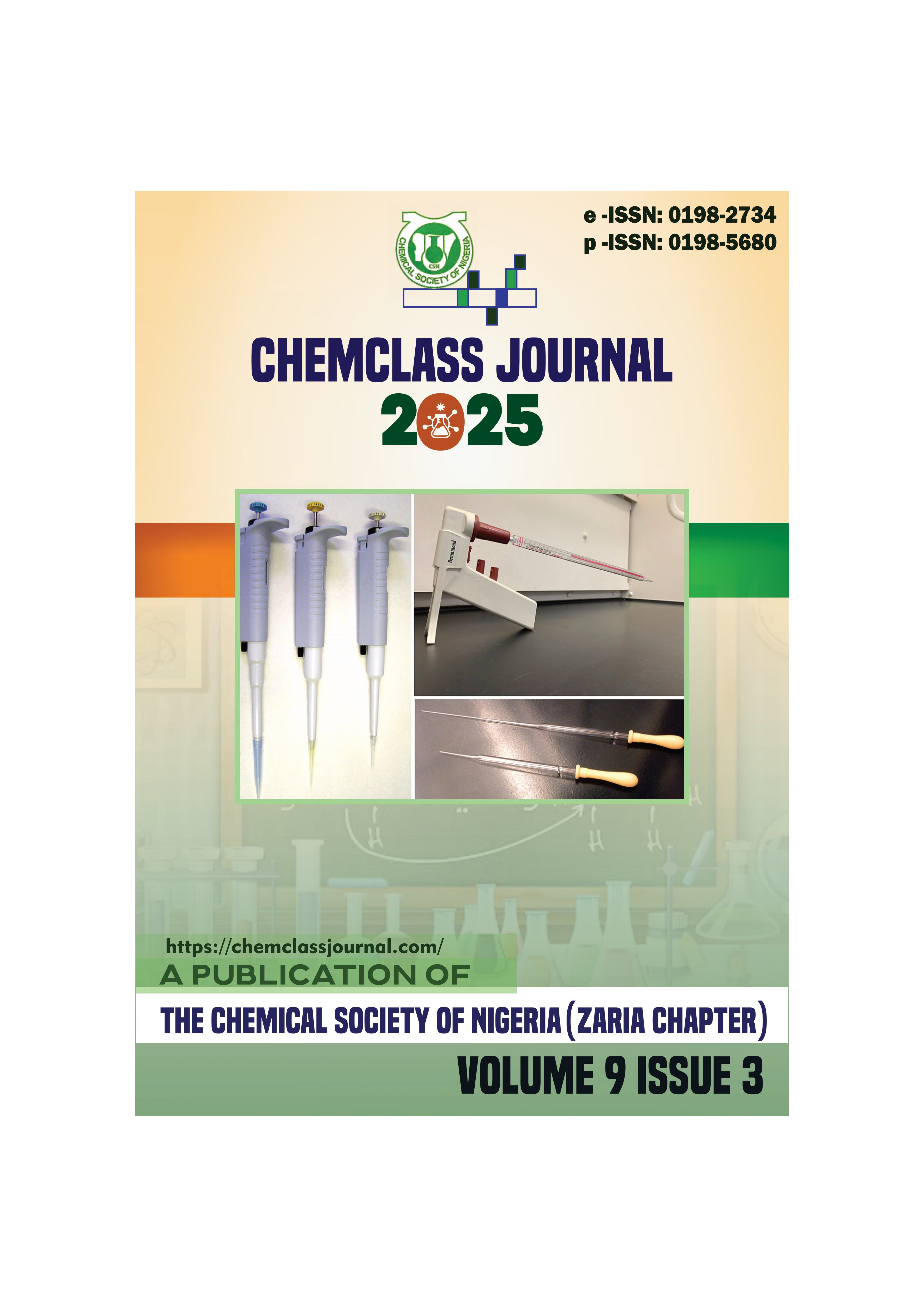Determination of the Suitability of Clay Samples from Ebonyi State, Nigeria for Ceramics Production
DOI:
https://doi.org/10.33003/Keywords:
clay minerals , characterization , ceramics , physicochemical parameters, industrial applicationsAbstract
The characterization of clay samples from four locations in Ebonyi State (Ezamgbo, Abakaliki, Ikwo and Abaomege) and the determination of their potential for ceramics and other industrial applications were studied. The physicochemical characteristics as well as the thermal degradation pattern of the clay minerals were determined following American Society for Testing and Materials (ASTM) standard methods of analysis. X-ray fluorescence (XRF) and thermo-gravimetric analyzer (TGA) were used for mineralogical and thermal degradation analyses, respectively. The results of physical characteristics of the clay revealed that moisture ranged from 22.63% to 27.36%. Other results are apparent porosity, 25.73%-31.26%; linear shrinkage, 2.60%-8.00%; cold crushing strength 1440 KN/m2 - 1555 KN/m2; apparent density; 1.95-2.60 g/cm; bulk density; 1.34-1.84 g/cm3; plasticity; 22.60-46.00% and loss on ignition; 8.80% - 12.60%. Silica (SiO2) has the highest composition, with a range of 69.24%-62.29%. Other results of chemical analysis are Alumina (Al2O3) (18.49%-22.58%), Fe2O3 (5.49%-7.39%), ZnO (3.00%-5.00%), TiO2 (0.023%-2.95%). The thermal behaviour showed weight loss similar to kaolinite degradation. The results revealed that the clay contains two major minerals: kaolinite and quartz, montmorillonite and other alkali and basic oxides in small amounts. When compared with standards, the results revealed that some of the physical and chemical parameters are within acceptable limits, which makes the clay from the four locations suitable as raw material for production of ceramics and with potential in various industrial applications. These potentials therefore qualify the exploration of these huge clay deposits for industrial applications.





 ChemClass Journal
ChemClass Journal
